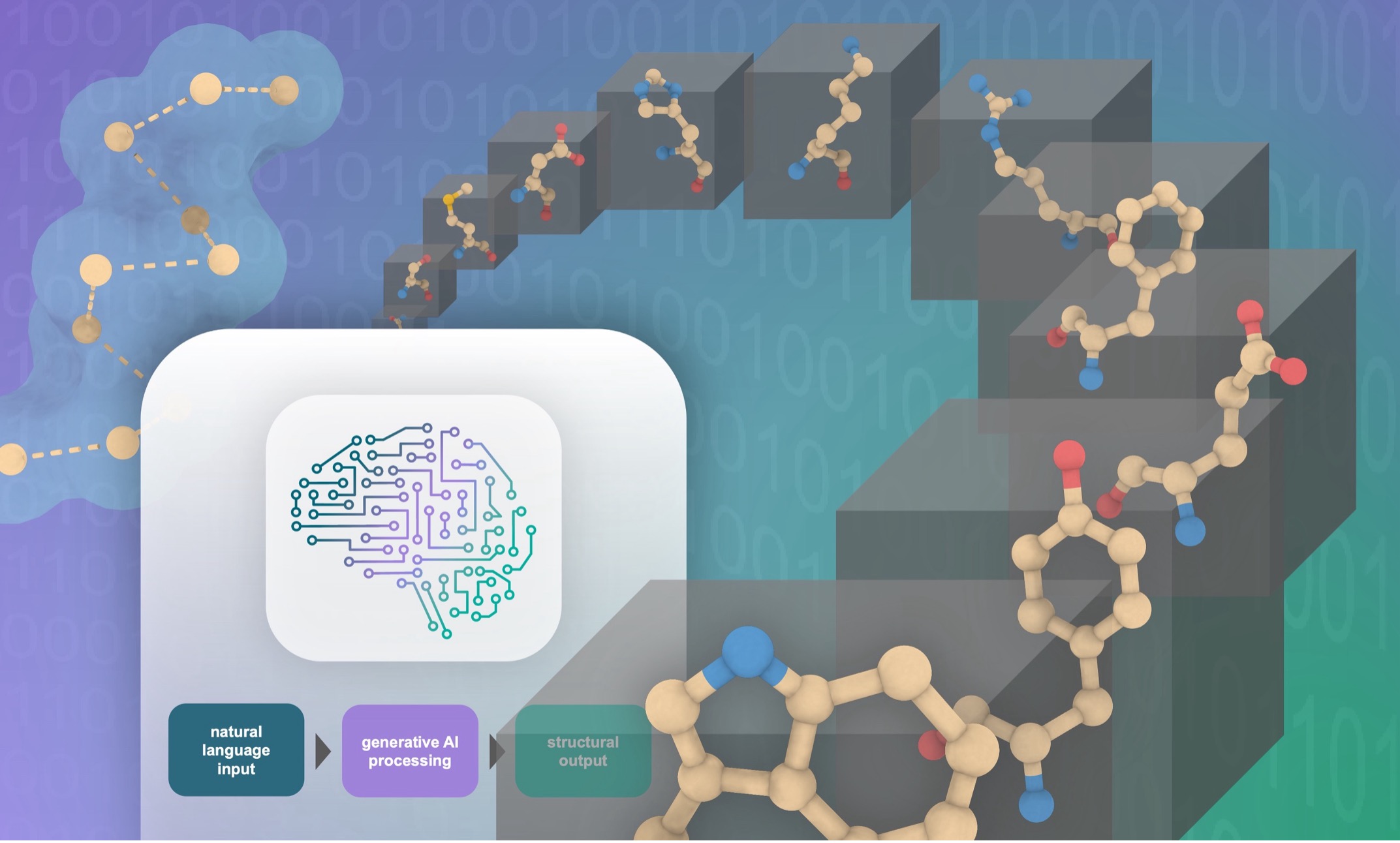
Illustration Acknowledgment: Molecular graphics generated with UCSF ChimeraX (https://www.rbvi.ucsf.edu/chimerax), developed by the Resource for Biocomputing, Visualization, and Informatics at the University of California, San Francisco, with support from National Institutes of Health R01-GM129325 and the Office of Cyber Infrastructure and Computational Biology, National Institute of Allergy and Infectious Diseases.
New Brunswick, N.J., August 21, 2024 – Generative artificial intelligence (AI) powered by human language has made remarkable progress and gained widespread use through tools such as ChatGPT. While it is mostly known for helping with reading and writing, scientists are starting to explore how this type of AI can be used in research. In a recent study, Rutgers researchers, including from Rutgers Cancer Institute and RWJBarnabas Health, New Jersey’s only National Cancer Institute (NCI)- Designated Comprehensive Cancer Center, show that generative AI can model basic biological structures, like amino acids (the building blocks of proteins) and a loop-like structure commonly found in proteins. Researchers also found that generative AI can analyze the way a drug and its target protein interact. These capabilities are still in an early stage but are poised to evolve alongside the rapid advancement of generative AI technology, paving the way for potential applications in the biomedical sciences, including cancer research.
Wadih Arap, MD, PhD, director of Rutgers Cancer Institute at University Hospital and Renata Pasqualini, PhD, chief of the Division of Cancer Biology at Rutgers New Jersey Medical School and Rutgers Cancer Institute researcher are senior authors of the study and available for comment. Other authors include Alexander M. Ille, PhD; Christopher Markosian, MD/PhD student, Stephen K. Burley, MD and Michael B. Mathews, PhD.
For additional authors/disclosures, view the full article, which was published in Scientific Reports.
MEDIA CONTACTS:
Krista Didzbalis
732.507.8307
krista.didzbalis2@rwjbh.org

